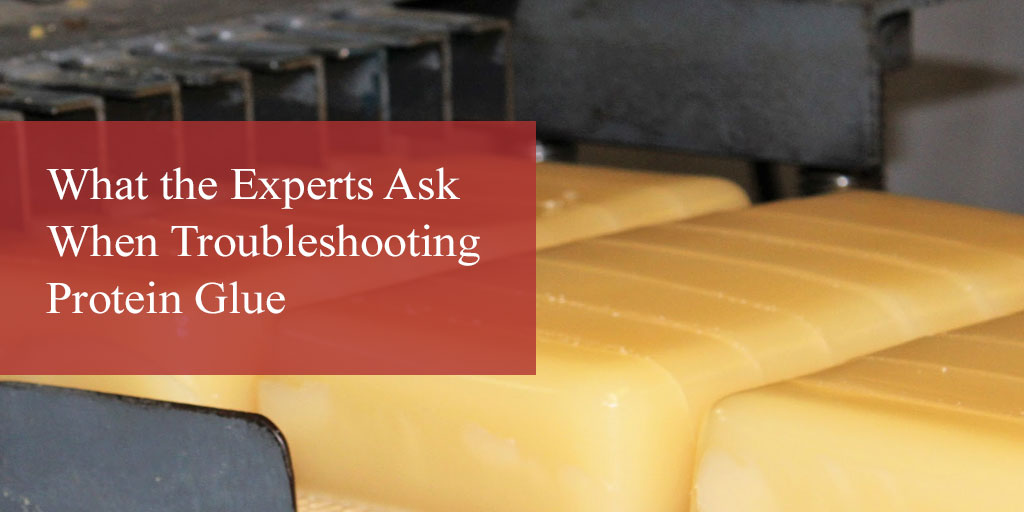Working with adhesives can be notoriously tricky. When we get calls about why a customer’s glue isn’t working, it could stem from various factors. If you believe your protein glue application isn’t running as optimally as it should be and want a second option, here are some of the questions a glue expert is likely to ask when troubleshooting your adhesive application.
1. What equipment are you using?
Be sure your glue is appropriate for your glue pot and that all operations understand how to load glue into the equipment properly.2. What is the glue temperature in the glue pot and at the rollers?
Temperature is one of the most essential factors in protein glue application. Running your glue at a lower temperature can cause the glue to set too quickly. On the other hand, too much heat can extend the drying time or possibly burn your glue.
Be sure to take the temperature of your adhesive during production regularly. Don’t rely on what the temperature gauge on the machine says alone; test it! Check the temperature of your glue pot and rollers with a thermometer often.
3. What is the viscosity of your protein glue?
Viscosity and temperature go hand in hand. Glue at warmer temperatures is stickier than glue at cooler temperatures. Check how tacky your glue is and try to change the temperature accordingly.4. What speeds are you running your production at?
Speed is another crucial variable when applying protein glue to substrates. Production at higher speeds requires the glue to set faster or dry faster, while slower speeds need the glue to stay open longer or dry slower.5. What are the solid readings?
One of the best ways to check your glue during production is to use a refractometer. This simple to use handheld tool measures the percentage of solids in protein adhesives.
Measuring your solids lets you know if you have the correct glue to water ratio for proper adhesion. Too little water can cause a lot of glue build-up, while too much water will reduce adhesion properties.
6. What are the conditions in the plant?
Humidity can have a significant impact on protein glue. As a natural adhesive, protein glue is best kept in a cool, dry environment before use. If your protein glue is not applied or stored in a climate-controlled area, the time of year can affect your application.Troubleshooting Protein Glue
Are you still having issues with your glue application? Sometimes a helping hand can help improve and optimize your operations. Our experts at LD Davis are ready to help you ensure your glue application is running smoothly.







